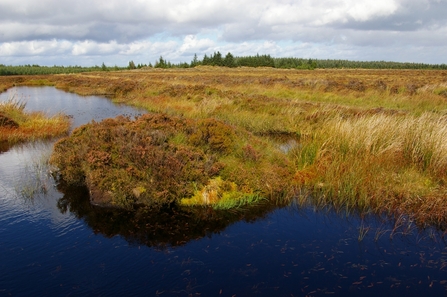West Chevington by Duncan Hutt
Sixth largest landowner assesses climate risk across 400 square miles
A new report published yesterday by one of the UK’s largest landowners reveals that society must take fast action to adapt to the impacts of the climate crisis and be prepared to see nature and wild places change in order to survive.
The Wildlife Trusts’ first climate risk assessment, Changing Nature, examines the impacts of the changing climate across their estate, which covers nearly 400 square miles. It assesses the risks and looks ahead at what is needed to help nature adapt and survive in the future. The findings come at a time when the UK is already one of the most nature-depleted countries in the world.
The research finds that, by the 2050s, under a future warming trajectory that reaches 3°C warming by 2100:
- Half of The Wildlife Trusts’ nature reserves will have 30+ days of very high fire risk yearly
- Almost all reserves will see more than 1°C increase on hot summer days by 2050
- 55% of reserves will see nearby river flows drop by more than 30% during times of low flow
Findings show how extreme weather is already affecting many Wildlife Trust reserves, including:
- Wildfires - have destroyed valuable and rare habitats, affecting the availability of food for wildlife, and costing huge amounts of time and money
- Flooding - has impacted wildlife, damaged infrastructure, and increased river pollution
- Droughts - have lowered the water table on wetland nature reserves, dried out chalk streams and peat bogs, and concentrated pollution in rivers
The Wildlife Trusts want to see increased effort from governments, business, and other landowners on climate adaptation, including greater investment in nature-based solutions and a specific focus on resilience.

Bell Crag Flow, one of the Border Mires, by Duncan Hutt
Mike Pratt, Northumberland Wildlife Trust Chief Executive says:
“Climate change is contributing more and more to nature’s decline with devastating consequences for people and wildlife. We are already stepping-up our efforts to restore habitats so that they benefit wildlife and are better able to store carbon. Our report also shows the range of actions we are taking to help nature adapt to climate change and what’s needed in the future – from further rewetting of peatlands to backing community-led rewilding projects.
“The projected impact of climate change on our nature reserves is just the tip of the iceberg. We need people to join us in creating a new national vision for our landscapes because we can no longer focus only on restoring nature to a historical state; change is inevitable.
“A concerted effort is required to create more space for nature everywhere, enabling natural ecosystems to function properly, creating habitats for wildlife, and building diversity and flexibility for the future.”
Across the UK, all 46 wildlife trusts are providing innovative solutions to help wildlife on land and sea adapt to the changing climate including releasing beavers, re-bending rivers to regulate water flows, restoring peatlands to help them cope with hotter, drier conditions, and initiatives to control invasive species.
In this region, Northumberland Wildlife Trust has been working at Whitelee Moor in North Northumberland to improve the carbon storage capacity of upland peat - a particular project of its Vice President Angus Lunn MBE, whose dedicated actions since the 1960s have been crucial to securing protected status for the Border Mires that support a host of nationally important wildlife.
Elsewhere at Druridge Bay, the wildlife charity’s new 327-hectare site at West Chevington is set to become one of the most ambitious lowland rewilding projects in the north of England. It will form an integral part of the wildlife charity’s fight against global warming and will allow its teams the opportunity to test a number of rewilding methods including expanding the existing broadleaf woodlands to store more carbon, reduce carbon emissions, and improve air quality which will ultimately restore natural processes to reduce climate change impacts.
